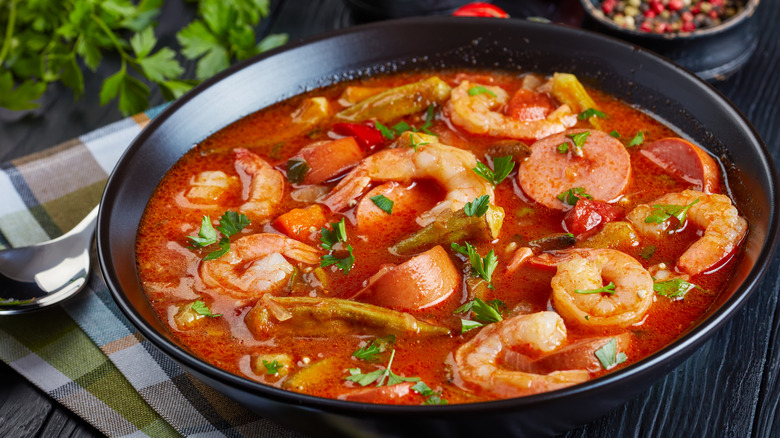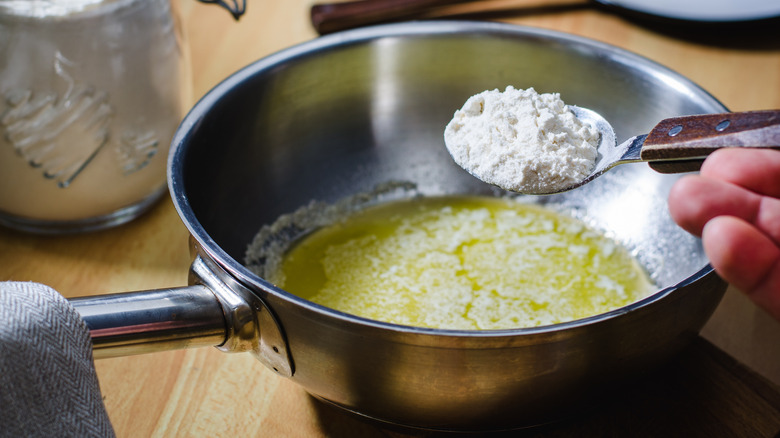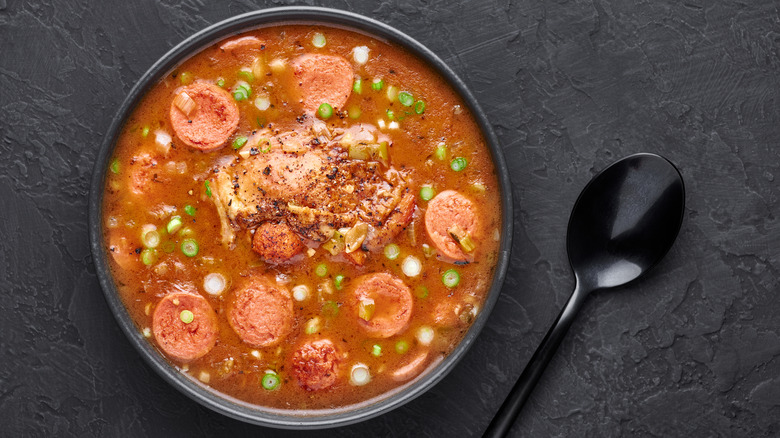The Easy Way To Prevent Your Gumbo Roux From Burning
Although we associate gumbo with Louisiana, its roots actually come from West Africa. Once slaves introduced the dish to the Americas, it underwent some changes to add European and Native American influences. However it got its start, a traditional chicken and sausage gumbo, Isaac Toups' spin on the dish, or your own variation is certainly worth the time in the kitchen. The finished product is an undeniably nourishing and nurturing soulful stew that's filling, healthy, and reminiscent of all things New Orleans.
While the combination of veggies, meats, and stock gives gumbo its notable comfort food fame, the real star of the show is a very basic combination of fat and flour. However, if you burn your base, that flavor will carry through to the finished dish, so it's essential you master the art of a good roux. The key is easier than you think. All it requires is your undivided attention.
Don't rue the roux
Have no fear: A roux is not difficult to make. However, it will test your ability to stay on task. It begins with a combination of butter or oil and flour. While some lighter recipes call for cooking the roux for a minute or so, gumbo takes that to new levels, with most recipes suggesting you cook it for up to 45 minutes. The longer you cook a roux, the more flavorful and rich it will be.
The best way to avoid burning your roux is to constantly monitor it and continuously stir it. This not only incorporates the ingredients together, but helps to maintain a consistent temperature across the roux. It works best if you cook your roux over medium-low heat. If the burner is too hot, you'll risk scalding your base and you will need to start over. The good news is that your roux is the starting point. If you lose focus or are pulled away and your roux burns, little is lost except time. The ingredients are common and inexpensive, so chalk it up to experience and practice some more.
Perfecting the roux
Pay attention to color and consistency. If your roux is too liquid, add a bit more flour. On the other hand, if it's thick and globular, thin it a bit with more oil or melted butter. As the roux cooks, it will darken in color. How dark you allow your roux to get is a chef's preference, but most cooks suggest a finished roux with a color that lands between caramel and dark melted chocolate.
Once you've mastered the art of the long-cooking roux for gumbo, you'll have no problem taking the two-step approach to making a roux that will elevate other dishes, too. A quick roux only takes a few minutes but offers the core of a thick, rich gravy. It's also the base for a creamy homemade cheese sauce. Roux, whether we're talking about the light white, medium blonde, or slow-producing brown, is also the foundation of many French, Creole, and Cajun dishes such as a tasty béchamel, velouté, sauce tomate, mushroom cream sauce, and the lesser-known espagnole sauce, as well as étouffée and some forms of jambalaya.


